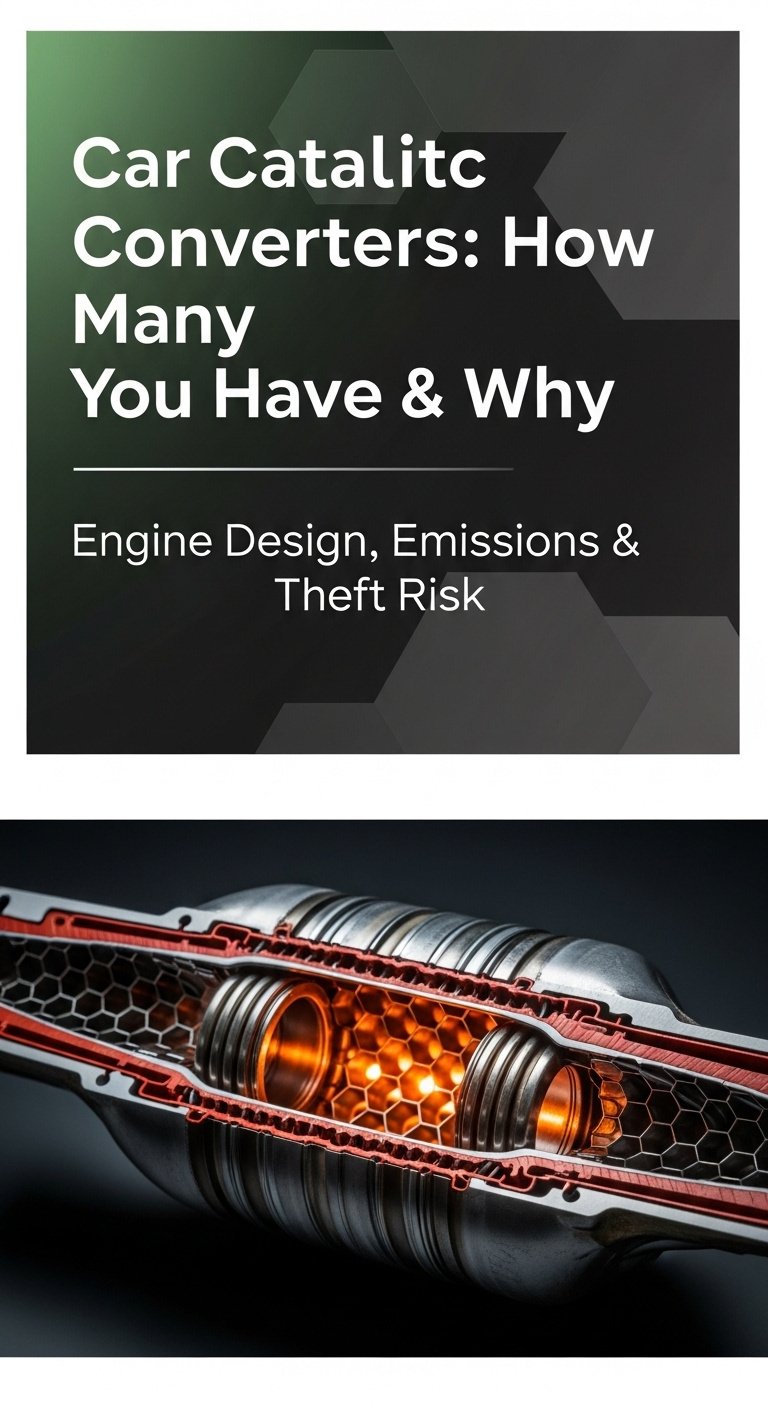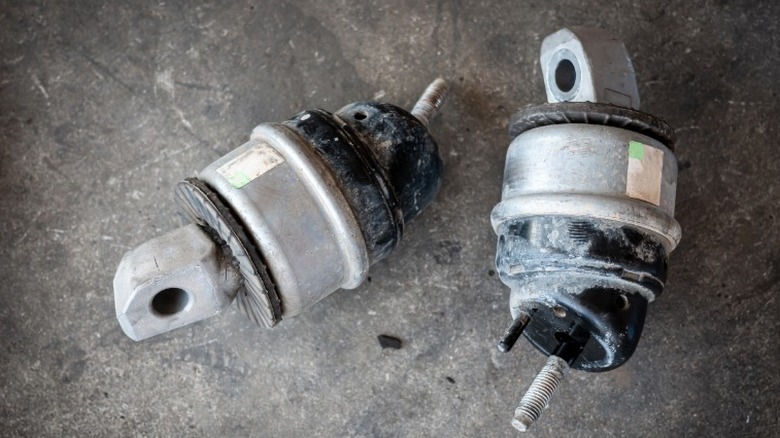Ever felt a strange vibration through your steering wheel or heard a startling “clunk” when you shift gears? These are often the first confusing signs of a problem that many drivers don’t think about: failing engine mounts. You’re left wondering what’s wrong, how serious it is, and what it takes to fix it. This guide cuts through the confusion, providing a definitive answer on how many engine mounts your car has, why that number matters, and how to spot the critical signs of failure before they lead to bigger problems.
Most cars have between three and four engine mounts. The exact number can range from two to six, depending on the vehicle’s design, engine size, and whether the engine is mounted sideways (transverse) or front-to-back (longitudinal).
Leveraging extensive analysis of automotive design principles and established mechanical patterns, this guide unpacks everything you need to know. We’ll explore the key factors that determine your car’s specific configuration, what these crucial parts actually do, and how to diagnose issues like a seasoned pro. This guide unpacks proven approaches and critical insights to help you effectively navigate any questions you have about your car’s engine mounts.
How Many Engine Mounts Does a Car Typically Have? The Definitive Answer
The most direct answer to how many engine mounts does a car have is this: most cars have between three and four engine mounts, though the exact number depends on the vehicle’s design, engine size, and orientation. While some smaller vehicles might have as few as two and some heavy-duty trucks as many as six, the three-to-four range covers the vast majority of cars on the road today.

So, what is an engine mount? In simple terms, it’s the component that bolts your engine to the frame of your car. It’s made of a strong metal for structure and a block of rubber (or a hydraulic fluid chamber) to absorb the intense vibrations your engine produces. Think of them as the powerful shock absorbers that keep your engine stable and your ride smooth.
While the number can vary, three to four mounts is the most common setup you’ll find in the majority of passenger cars.
But why isn’t there just one standard number? Let’s dive into the factors that change the count.
Why the Number of Engine Mounts Varies: Key Influencing Factors
The specific number of engine mounts isn’t arbitrary; it’s a carefully calculated decision based on fundamental engineering principles. The way an engine is positioned and the type of vehicle it’s in are the two biggest factors that determine how many support points are needed for optimal stability and vibration control. The number of mounts is determined by the engine’s orientation (sideways vs. front-to-back) and the vehicle’s drivetrain (FWD vs. RWD), with larger vehicles requiring more support.
The primary influencing factors include:
- Engine Orientation: Is your engine mounted transversely (sideways) or longitudinally (front-to-back)? This is the biggest determinant.
- Drivetrain: Is your car Front-Wheel Drive (FWD), Rear-Wheel Drive (RWD), or All-Wheel Drive (AWD)?
- Vehicle and Engine Size: Heavier engines in larger vehicles like trucks and SUVs require more support.
Here is a clear breakdown of how these factors influence the typical mount configuration:
| Factor | Typical Mount Count | Common Setup & Rationale |
|---|---|---|
| Transverse Engine (FWD) | 3 to 4 (sometimes 5) | One at timing cover, one at transmission, one front, one rear to control engine rock. A fifth ‘torque mount’ is common. |
| Longitudinal Engine (RWD) | 2 to 4+ | Often two main mounts underneath to support weight, with others for lateral control. |
| Trucks & Heavy Vehicles | 4 to 6 | More mounts are needed to support the larger engine size and weight, ensuring stability. |
A “transverse” engine sits sideways in the engine bay and is common in FWD cars. These engines have a tendency to rock forward and backward during acceleration and deceleration. To counteract this, they often use a specific “torque mount” (also called a pitching stopper) in addition to the main support mounts. A “longitudinal” engine sits front-to-back, typical in RWD vehicles, and requires a different mounting strategy focused on supporting its weight and controlling side-to-side motion.

Pro Tip: Check your own car! Pop the hood and see if your engine sits sideways (transverse) or front-to-back (longitudinal). This is the biggest clue to your mount setup.
What Do Engine Mounts Actually Do? (And What Happens When They Fail)
Engine mounts have two critical jobs. First, they bear the entire weight of your engine and transmission, securing them to the vehicle’s chassis. Second, and just as importantly, they absorb the vibrations and shocks created by the engine’s operation. Without them, the bone-rattling vibration would make driving unbearable and could quickly damage other components. When they fail, the symptoms are hard to ignore.
Think of engine mounts like the shock absorbers for your engine. When they wear out, you feel every single bump and vibration. Engine mounts support the engine and absorb vibrations; signs of failure include excessive cabin vibration, clunking noises during acceleration, and visible engine movement.
If you suspect you have a bad motor mount, look for these tell-tale signs:
- Excessive Vibrations: This is the most common symptom. You’ll feel vibrations through the steering wheel, floorboards, or the entire cabin, especially when the car is idling or under load.
- Impact Noises: Listen for loud clunking, banging, or rattling sounds. These are most noticeable when you start the car, shift from park to drive, accelerate hard, or brake suddenly. This noise is the sound of the engine physically moving and hitting other parts.
- Visible Engine Movement: A healthy engine should barely move. If you have an assistant put the car in drive (with the brake held firmly) and gently press the accelerator, a failed mount will allow the engine to lurch or jump significantly.
- Damage to Other Components: If left unchecked, excessive engine movement can damage hoses, belts, and exhaust system components, leading to more expensive repairs.
Modern vs. Traditional: A Quick Guide to Engine Mount Types
Not all engine mounts are created equal. As automotive technology has advanced, so has the engineering behind these crucial components. While the basic rubber mount is still common, modern vehicles often use more sophisticated designs to deliver a smoother and more controlled driving experience.

Here’s a quick look at the main types you’ll encounter:
- Standard Rubber Mounts: The most common and traditional type. They use a solid block of specially formulated rubber sandwiched between metal brackets to absorb vibrations. They are simple, effective, and cost-efficient.
- Hydraulic Mounts (Hydro-mounts): These look similar to rubber mounts but are filled with a hydraulic fluid. This fluid-filled design allows them to offer better dampening (vibration absorption) over a wider range of engine speeds and frequencies, resulting in a smoother ride.
- Electronic / Active Mounts: Found in many modern luxury and performance vehicles, these are the most advanced type. They are often fluid-filled and use electronics and vacuum pressure to change their stiffness in real-time. They can be soft at idle for maximum comfort and then instantly firm up during hard acceleration to provide better control and performance.
Quick Fact: The move towards hydraulic and active mounts is a key reason why modern cars often feel so much smoother and quieter than older models.
Don’t Forget Transmission Mounts: The Powertrain’s Other Stabilizer
When discussing how many engine mounts does a car have, it’s easy to overlook their equally important counterpart: transmission mounts. Your car’s powertrain consists of the engine and the transmission working together. While engine mounts support the engine, transmission mounts are specifically designed to secure the transmission to the chassis. They perform a similar function, absorbing vibrations and preventing movement as gears shift and torque levels change.
A car has both engine mounts and transmission mounts; together, they support the entire powertrain, but they are distinct parts with specific roles.
Both engine and transmission mounts work as a system to keep your entire powertrain stable. A failure in one can put extra stress on the others, so it’s important to consider them all as part of the same support structure.
So when a mechanic talks about replacing your ‘mounts,’ it’s wise to ask if they mean engine mounts, transmission mounts, or both!
For those looking to tackle this job themselves or simply wanting the right tools for inspection, having a quality mechanic’s tool set and a powerful inspection light can make all the difference.
FAQs About Car Engine Mounts
Here are answers to some of the most common questions drivers have about their vehicle’s engine mounts.
How much should it cost to replace engine mounts?
The cost to replace engine mounts varies widely based on several factors, including your car’s make and model, the type of mount required (rubber vs. hydraulic/active), and local labor rates. As of 2025, you can generally expect the cost to be split between the part itself and the labor to install it. Because some mounts are much harder to access than others, labor can be a significant part of the bill. It is always wise to get multiple quotes from trusted mechanics to ensure a fair price.
How long do engine mounts last?
Engine mounts don’t have a fixed replacement schedule like oil or spark plugs. They are a “replace as needed” component. They typically last for many years, often well over 100,000 miles, but their lifespan can be significantly shortened by factors like aggressive driving habits, frequent hard acceleration, or exposure to fluid leaks (oil and coolant can degrade the rubber). They are replaced based on their physical condition and the symptoms of failure, not a set mileage or time interval.
Can I just replace one bad motor mount?
Yes, you can technically replace only the one motor mount that has failed. This can be a budget-friendly option in the short term. However, mechanics often recommend replacing all the engine mounts as a set. The logic is simple: all the mounts are the same age and have been subjected to the same stresses. If one has failed, the others are likely weakened and not far behind. A new, stiff mount will also put additional stress on the remaining old, worn-out ones, which can accelerate their failure.
Final Summary: Understanding Your Car’s Engine Mounts
From the simple question of how many engine mounts does a car have to understanding the complex symptoms of their failure, you now have a comprehensive picture of these vital components. We’ve seen that most cars have three to four mounts, with the exact number depending on the engine’s orientation and the vehicle’s design. More importantly, we’ve learned that their job is to provide stability and a smooth ride, and when they fail, the signs—vibrations, clunks, and excessive engine movement—are unmistakable.
Here are the most critical takeaways to remember:
- The Magic Number: Most passenger cars are equipped with three to four engine mounts.
- Function is Key: Their primary roles are to support the engine’s weight and absorb its vibrations.
- Symptoms are a Warning: Excessive vibration, clunking noises, and visible engine lurching are clear signs that your mounts need inspection.
- A System of Support: Don’t forget that transmission mounts are also part of the powertrain support system and are just as important.
Armed with this knowledge, you can now better understand your vehicle and have a more informed conversation with your mechanic. Recognizing the signs of a failing engine mount early can save you from more costly repairs down the road and ensure your car continues to run smoothly and safely for years to come.
Last update on 2025-12-28 / Affiliate links / Images from Amazon Product Advertising API













